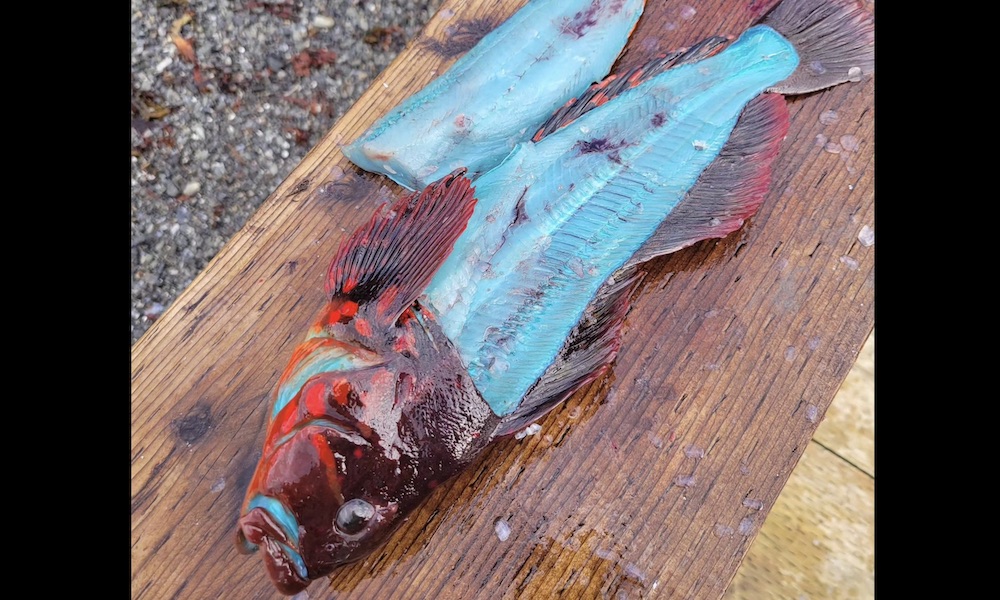Alaska News Source on Thursday featured the recent catch of an odd-looking fish with bright-blue flesh. “Blue-fleshed rock greenling caught in Homer looks like a creature out of a Dr. Seuss book,” reads the headline.
Staying on theme, the author began:
“Alaska offers some of the most unique and diverse fishing there is. You could catch one fish, you could catch two fish, you can definitely catch a red fish — but did you know you could catch a blue fish?”

Images of the blue greenling fillets were shared Aug. 30 by The Lodge at Otter Cove, which stated on Facebook:
“Went out fishing today and caught a rock greenling. The flesh is blue. It turns white when you cook it. Mother nature is incredible.”
Nearly 600 followers chimed in with expressions of astonishment.
Donald Arthur, a biologist with the Alaska Department of Fish and Game, told Alaska News Source that the blue coloration is caused by a bile pigment called Biliverdin, also found in lingcod.
Rock greenling range from the Bering Sea to Central California and are caught primarily near rocky reefs.

Their skin is greenish-brown, sometimes with bright red blotches.
States the Oregon Department of Wildlife: “The meat in rock greenling is always blue or green in color, but when cooked the meat will turn white.”
As if to prove this, The Lodge at Otter Cove pinned a video atop the comments section of its post, showing seasoned blue fillets turning white in a frying pan. (See image above.)
Would you consider this a delicacy? Perhaps not, but the cooked white flesh of rock greenling is said to be flaky and mild.

